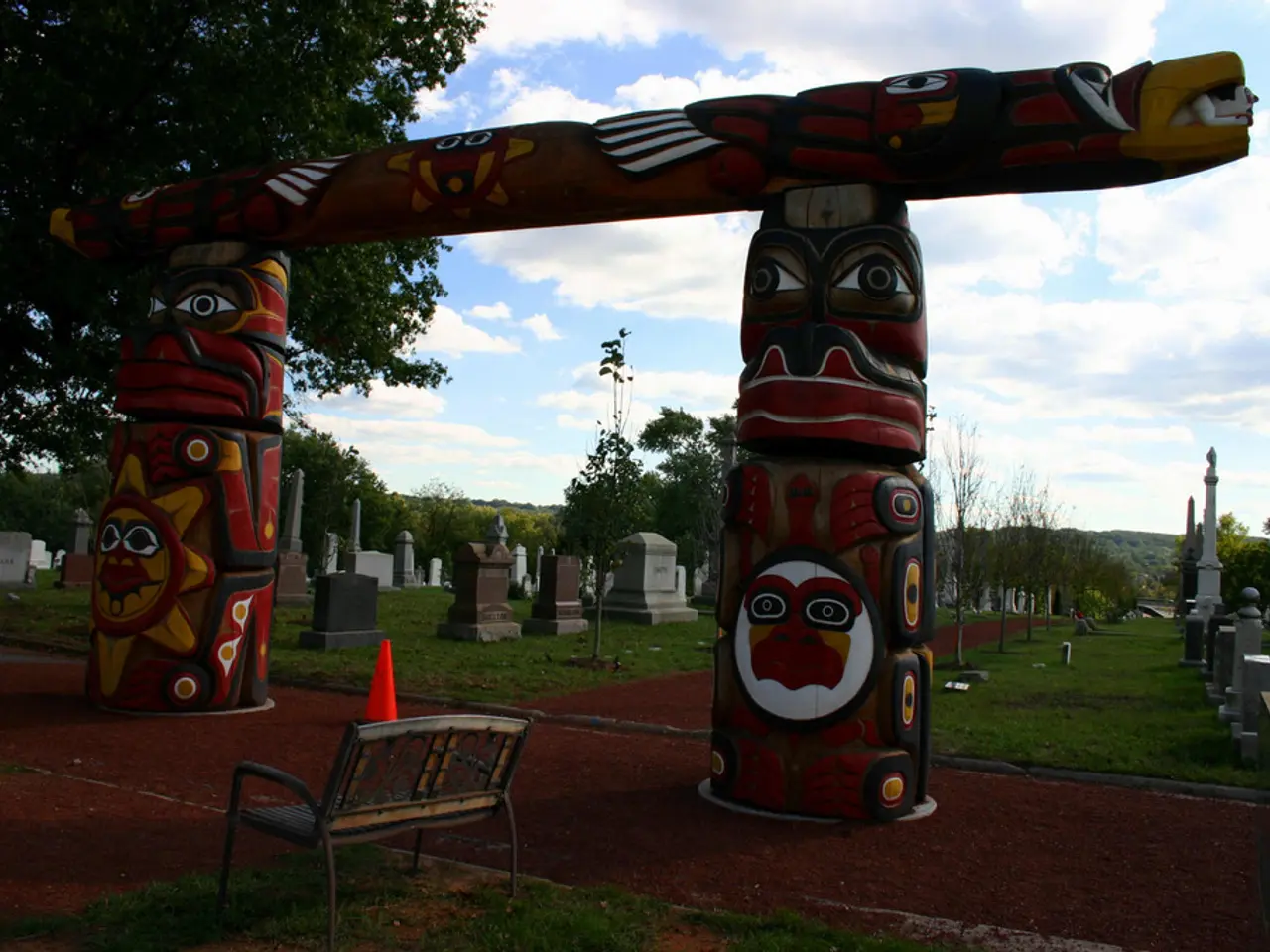Fascinating Details about the Most Massive Pyramid in the World
The largest pyramid in the world by volume, the Great Pyramid of Cholula, is a remarkable archaeological wonder located in Cholula, Puebla, Mexico. Known locally as Tlachihualtepetl, which means "man-made mountain" in Nahuatl, this colossal structure has a base measuring approximately 300 by 315 meters (984 by 1,033 feet) and stands about 25 meters (82 feet) tall.
Despite its relatively modest height, the Great Pyramid of Cholula boasts a staggering total volume of over 4.45 million cubic meters (157 million cubic feet), making it larger than the Great Pyramid of Giza in Egypt. According to the Guinness Book of World Records, the pyramid measures 450 meters by 450 meters, making it the largest pyramid on Earth[1][2][3][4].
The construction of the pyramid began around 300 BCE and continued for approximately 1,000 years, with numerous cultures participating in its creation. The pyramid was completed around the ninth century A.D[5]. It is believed that the pyramid was built in honor of the Mesoamerican god Quetzalcoatl, whose name means "feathered serpent" or "Quetzal-feathered Serpent."
The region where the pyramid was built has been inhabited for over 3,000 years. Archaeological evidence suggests that the site covers nearly 155 hectares, but archaeological work has been limited, and the pyramid remains the least explored structure of them all[6].
One of the most intriguing discoveries made at the site is the network of tunnels beneath the pyramid. Researchers have uncovered around 8 kilometers of tunnels, where they found various artifacts, including offerings, human remains, and pottery fragments dating back to 900 A.D[7].
However, the pyramid's exploration is limited due to the presence of a Church, 'Iglesia de Nuestra Señora de Los Remedios,' built by the Spanish on top of the overgrown pyramid in 1563. The church sits at the pyramid's summit, preventing its excavation and restoration[8].
Despite these challenges, the Great Pyramid of Cholula continues to captivate visitors and researchers alike, offering a unique glimpse into the rich history and culture of the ancient Mesoamerican civilizations.
References: [1] Guinness World Records. (n.d.). World's largest pyramid. Retrieved from https://www.guinnessworldrecords.com/world-records/worlds-largest-pyramid/ [2] National Geographic Society. (n.d.). Great Pyramid of Cholula. Retrieved from https://www.nationalgeographic.org/encyclopedia/great-pyramid-cholula/ [3] BBC News. (2016, February 18). Mexico's Great Pyramid of Cholula: Ancient city unearthed. Retrieved from https://www.bbc.com/news/world-latin-america-35601804 [4] The Smithsonian Institution. (n.d.). The Great Pyramid of Cholula. Retrieved from https://www.si.edu/spotlight/great-pyramid-cholula [5] The Smithsonian Institution. (n.d.). The Great Pyramid of Cholula: Frequently Asked Questions. Retrieved from https://www.si.edu/spotlight/great-pyramid-cholula/faq [6] The Smithsonian Institution. (n.d.). The Great Pyramid of Cholula: Excavations. Retrieved from https://www.si.edu/spotlight/great-pyramid-cholula/excavations [7] The Smithsonian Institution. (n.d.). The Great Pyramid of Cholula: Tunnels. Retrieved from https://www.si.edu/spotlight/great-pyramid-cholula/tunnels [8] The Smithsonian Institution. (n.d.). The Great Pyramid of Cholula: Church. Retrieved from https://www.si.edu/spotlight/great-pyramid-cholula/church
- The network of tunnels beneath the Great Pyramid of Cholula, discovered during archaeological excavations, contains various artifacts and offers a glimpse into the lifestyle and home-and-garden practices of ancient Mesoamerican civilizations from around 900 AD.
- Some researchers believe the pyramid, with its intricate tunnels and vast collection of artifacts, could provide valuable insights into the mythology and beliefs of the ancient cultures that participated in its construction, including the worship of the god Quetzalcoatl.
- Tourists and researchers flock to the Great Pyramid of Cholula, the largest pyramid on Earth by volume, as a travel destination, where they can appreciate the awe-inspiring ancient architecture and learn about the rich history and culture of Mesoamerican civilizations, despite the limitations posed by the presence of a church built on its summit.




